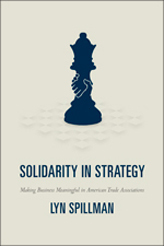By HOWIE RUMBERG
AP Sports Writer
Associated Press Sports
updated 11:04 p.m. ET May 20, 2013
NEW YORK (AP) - Things weren't going well for Johnny Cueto in his return from the disabled list, so he had a conversation - with himself.
That's all it took.
Cueto responded to the pep talk by striking out six of his last seven batters, then Jay Bruce helped make him a winner by hitting a tiebreaking home run that carried the Cincinnati Reds to a 4-3 victory over the New York Mets on Monday night.
"I asked myself, `What was going on, what happened?"' Cueto said through a translator. "I told myself I have to start pitching the way I am. Then after that, I said, `That is me."'
Brandon Phillips had a two-run single for his first career hit off Shaun Marcum in 13 at-bats. Phillips also made two sparkling plays in the field to help the Reds bounce back from a stunning 3-2 loss to the Phillies in which closer Aroldis Chapman gave up two home runs.
Chapman, the Reds' fifth reliever, struck out two - one on a 99 mph fastball - in a perfect ninth for his ninth save. He had blown his two previous save chances.
"Got to get back on the horse, right away," manager Dusty Baker said. "Otherwise it festers and grows."
Cueto (2-0) started for the first time since leaving his outing April 13 in the fifth inning with a strained left upper-back muscle. Making his fourth start of the season, the Reds' ace gave up three hits and three runs with eight strikeouts in five innings. But he walked four, including one in the third, when Marlon Byrd touched him for a three-run homer.
"I knew you just couldn't keep getting in trouble like that, walking guys without centering one, but that's just what happened," Baker said. "But he came back and pitched well."
After the homer, Cueto struck out four in a row with a fastball that reached the mid-90s.
His counterpart, Marcum (0-5), rarely reached 86 mph in pitching at least six innings for the second straight start after failing to finish five in any of his first three starts with the Mets. Still, he remains winless in his first season in New York.
Slumping Mets first baseman Ike Davis slid deeper into his monthlong funk, going 0 for 3 and being called for interference in the field when he was clipped at first by Joey Votto, who was making a turn toward second base in the Reds' three-run first inning.
Davis was lifted in a double switch after striking out in the sixth, his second strikeout of the night. He has two hits in his last 36 at-bats, and only one RBI in May.
Marcum appeared headed for another early exit after a 20-minute top of the first. He walked Shin-Soo Choo leading off. After an out, Votto, the NL player of the week, hit a smash that ricocheted off first base and into right field. As he made his turn at first, Votto nudged Davis, who was nonchalantly standing near the bag, watching the play. Votto was tagged out at second but Davis was charged with an error for interference and Votto was awarded second.
"I was looking for the ball and I took a couple of steps," Davis said. "That's why I was there longer than I should've been."
Phillips followed with a two-run single and Bruce doubled in a run, extending his hitting streak to 11. Marcum struck out Todd Frazier and Xavier Paul, and walked off to mock cheers.
"We've been through this now for what, five starts? I get hit, it's location. I made four or five mistakes today and they all got hit," Marcum said. "Got to limit the mistakes."
The right-hander did not give up another hit until Paul singled with two outs in the fourth.
Bruce broke the tie with a scorching line drive into the right-field seats leading off the sixth.
"Woo, that was a missile," Baker said.
Mets manager Terry Collins took a chance on putting strikeout-prone Rick Ankiel in the second spot in the order because he was 7 for 16 against Cueto, and Ankiel led off the third with a single. David Wright walked and, after Lucas Duda struck out, Byrd sent a drive to left field for his fourth homer this year.
Byrd came in 6 for 11 against Cueto.
The Mets loaded the bases in the first on two walks and a single by Duda, bringing up Davis.
The scoreboard operator urged fans to cheer on Davis, and many of the 23,038 in attendance made some noise. Davis hit a sharp grounder toward second, but Phillips dived to his right to stop it and then threw out Davis.
"I hit one ball hard - at the wrong guy, a Gold Glover," Davis said.
Phillips then showed why he's a three-time Gold Glove winner in the fifth, making a long run into center field for a basket catch with his back to the plate. It was a very difficult play, but he made it look easy.
"I practice that," Phillips said.
Collins and reliever LaTroy Hawkins were ejected by plate umpire Tom Hallion after the top of the seventh for disputing a call that Phillips was hit by a pitch. Collins and Hawkins insisted the ball hit the knob of the bat and not Phillips' hand.
NOTES: The Mets signed RHP David Aardsma to a minor league contract. He requested his release from the Miami Marlins organization Wednesday. The former Seattle closer missed all of 2011 and made only one appearance late last season with the Yankees. He will report to Triple-A Las Vegas. ... The Reds sent INF Neftali Soto to Triple-A Louisville to make room for Cueto. ... The Mets will host military appreciation night on Sunday. The Mets have given out more than 3,800 tickets to military personnel and their families for the game against Atlanta.
? 2012 The Associated Press. All rights reserved. This material may not be published, broadcast, rewritten or redistributed.
advertisement
More newsThe man who no longer matters
Posnanski: Albert Pujols' at-bats used to be buzzworthy, must-watch events. Now, they're not. Here's the result of his struggles the past few years.
Source: http://nbcsports.msnbc.com/id/51947422/ns/sports-baseball/
anchorman 2 kentucky basketball oaksterdam the fray national anthem dallas tornado oikos kentucky wildcats
 This week on TechCrunch TV's Ask A VC show, we have Mayfield Fund's Managing Director
This week on TechCrunch TV's Ask A VC show, we have Mayfield Fund's Managing Director 















